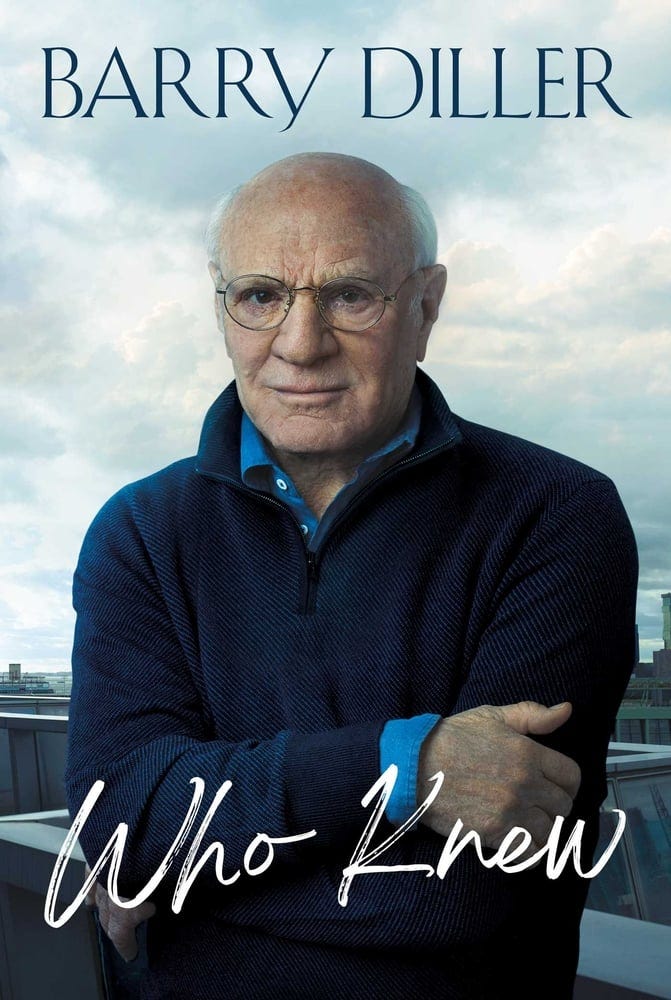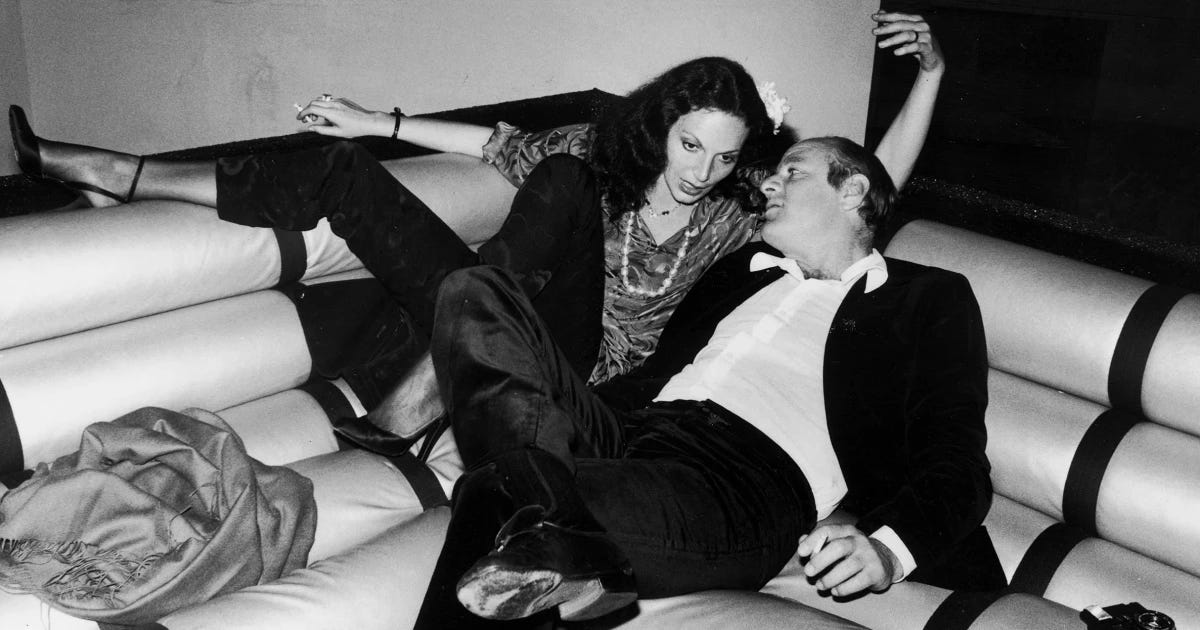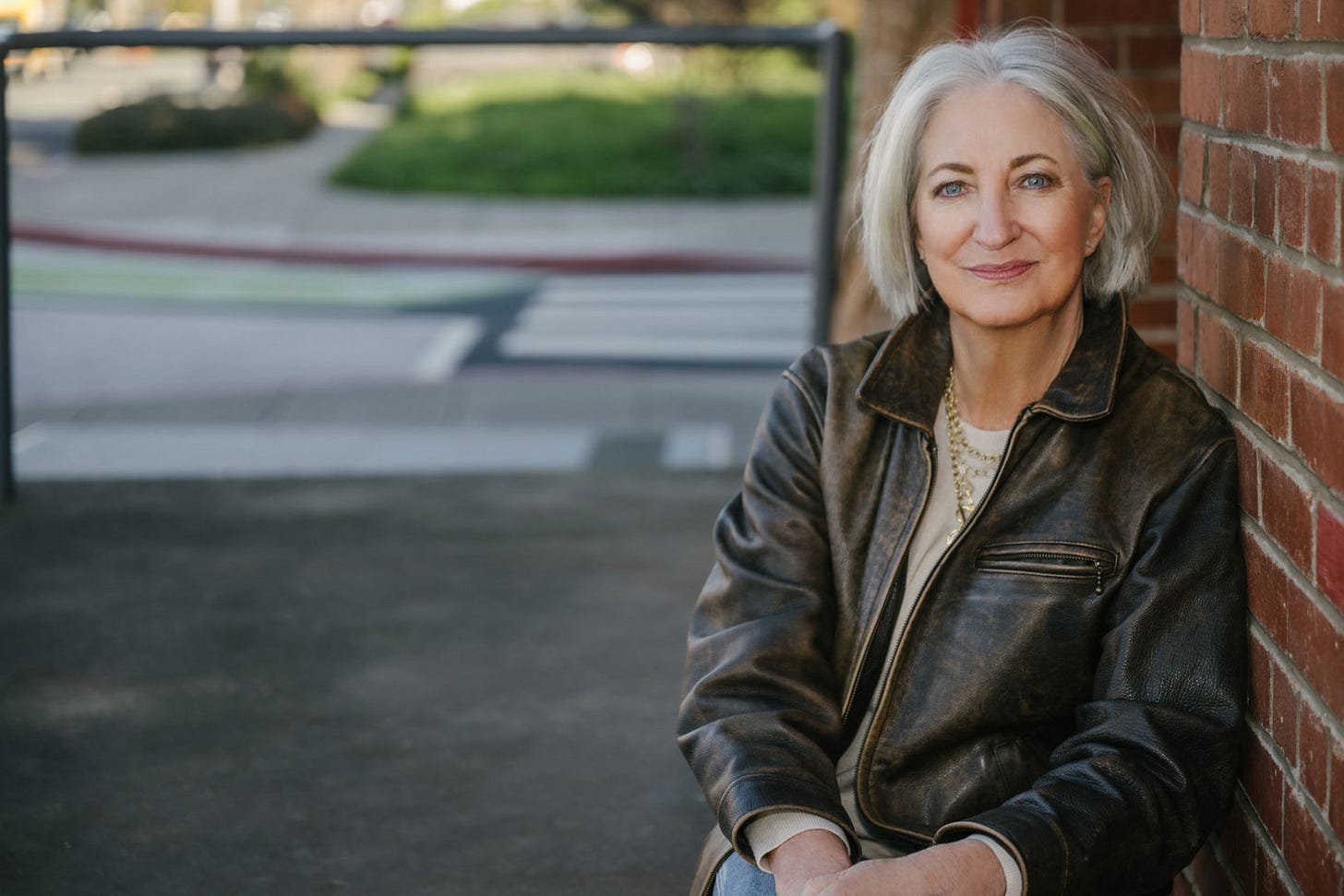A Case for the Mixed-Orientation Marriage
Past and present successes call for us to redefine marital union by Kirsten Mickelwait
Guest essay from author Kirsten Micketwait
In his new memoir, Who Knew, Barry Diller, chairman and senior executive of IAC and the Expedia Group, has publicly revealed for the first time that he is gay. Although Diller’s sexual orientation has been an open secret among friends and industry insiders for decades, what the larger public saw was his 50-year relationship and 24-year marriage to the fashion designer Diane von Fürstenberg.
Such revelations by famous people are deepening our understanding of the fluidity of orientation and gender roles, even within the confines of marriage. While Diller is now openly gay, he also writes of his relationship to von Fürstenberg that “We aren’t just friends. Plain and simple, it was an explosion of passion that [has] kept up for years.”
Barry Diller with then-girlfriend Diane von Furstenberg at Studio 54 in New York in the late ’70s. Robin Platzer / Getty Images file
Such a blurring of sexual identity is a new departure from what, until quite recently, was known as a “lavender marriage”—an arrangement of convenience used by LGBTQ+ men and women to cloak their sexual orientation from society, friends, and even family. Hollywood was rife with such marriages, including Rudolph Valentino and Jean Acker, Danny Kaye and Sylvia Fine, Barbara Stanwyck and Robert Taylor, Rock Hudson and Phyllis Gates, and Cary Grant and Dyan Cannon. Judy Garland had two lavender marriages, first to Vincente Minelli and then to Mark Herron. She even advised her daughter, Liza Minelli, that gay men made the best husbands—a piece of advice that Minelli followed when she married Peter Allen and later David Gest.
Another famous lavender marriage was that of songwriter Cole Porter and Linda Lee Thomas. Although the two were quite close during their 35 years together, Porter sought both brief physical encounters and long-term intimate relationships with men. And as it happens, his good friend, artist Gerald Murphy, pursued a similar path, though in a very different way.
Cole Porter and Linda Lee Thomas
Biographies suggest that Gerald was possibly bisexual and likely gay. In my new historical novel, The Ashtrays Are Full and the Glasses Are Empty, I follow the life of Gerald’s wife, Sara Murphy, and explore the couple’s complicated marriage. While in a typical “lavender marriage,” the couple enters into the contract knowingly and for convenience, with the Murphys it was more of a gradual revelation that took Sara by surprise.
Like so many men at the turn of the last century, Gerald was hiding his homosexuality from the world, and even from himself. “My life has been a process of concealment of the personal realities,” the real Gerald wrote to Sara. Until recently, being openly gay would have been the cause of career disaster, legal action, even death. There were plenty of reasons to keep it a secret.
But, like the Diller-von Fürstenbergs’, the Murphys’ marriage was about so much more than sexual preference. Theirs was an alliance of twin souls that produced not only three children but a golden life of creativity, beauty, and many loyal friendships. They were always each other’s closest ally. “He loved my heart and soul,” Sara muses in the novel. “Just not my body.”
Today such relationships are called mixed-orientation marriages (MOMs) and statistics indicate that increasing numbers of couples under 40 are choosing to partner with someone of a different sexual orientation.
In the December 2024 issue of Psychology Today, therapist Joe Kort writes that “Many of these couples don’t want to split up. They are trying to stay together. They are best friends. They are great co-parents. They manage their finances well and, despite others’ disbelief, they are having a satisfying sex life. The key here is that they fell in love with the person, not that person’s sexual orientation. Gender is secondary to the bond they feel.”
Diller’s memoir goes far in helping us to broaden our definition of marriage, even romantic love. His relationship with von Fürstenberg is “a romance as natural to us as breathing,” he writes. “It is the bedrock of my life… In some cosmic way, we were destined for each other.”
And isn’t that the relationship we’ve all been looking for?
# # # #
Kirsten Mickelwait is the author of a memoir, The Ghost Marriage (She Writes Press, 2021) and the upcoming historical novel, The Ashtrays are Full and the Glasses are Empty (Köehler Books, May 2025).









I mean… I am in. (Perhaps my new MO should be MO.) Can’t wait to read this. #goodcasting